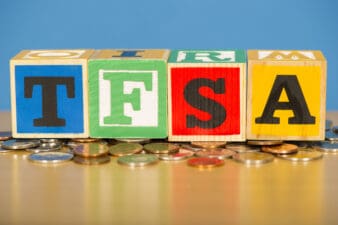COVID-19 is one of the worst socio-economic disruptions in recent memory. The unemployment shock caused by COVID-19-induced shutdowns was unprecedented in modern times, as too was the fiscal and monetary stimulus to combat long-lived economic damage and potentially avert a depression that could rival the Great Depression.
Back on February 20, when the markets fell off a very steep cliff, it was impossible for even big-league money managers to get out of the way of what was to come. The global markets imploded, with unprecedented circuit-breaking moves. For those who panicked, there was a real chance of missing out on the sharp market rebound in the months following March.
Timing the markets can be harmful to your wealth
If you tried to time a perfect exit from and re-entry to the markets, you likely took a beating. But if you surrendered to excessive volatility, you made most of the money lost in the COVID-19 crash back in the following months. And if you did some buying while others were selling amid the cash crunch depths of mid-March, you made a killing!
Today, global markets are looking to test their pre-pandemic heights. And there’s a real chance that they could fail to breakthrough the critical resistance level and surrender a considerable chunk of the gains posted in recent months.
The coronavirus is still out there, and a second outbreak seems inevitable at this juncture. While the U.S. Fed has investor’s backs this time around, there’s no telling just how much of a toll that COVID-19 will have on the economy when all’s said and done. And there’s a real chance that global central banks may not be able to quantitatively ease their way out of this socio-economic disaster.
TFSA Investors: Flex your muscles with a COVID-19 barbell approach rather than trying to time the markets
The U.S. Fed flexed their muscles, and they’re willing to throw everything but the kitchen sink to facilitate an abrupt recovery. But until there’s an effective vaccine, you should expect an unprecedented magnitude of volatility to prevail indefinitely. Few things are more unpredictable than biology, so you’d be wise not to attempt to time the markets, because not even the most seasoned economist on the planet knows with any degree of precision what we’re in for next.
It’s uncharted territory, and anything can happen. So, TFSA investors should prepare accordingly to benefit from whatever ends up happening with the insidious coronavirus. In a prior piece, I’d highlighted the “barbell” strategy that balances risks associated with the COVID-19 pandemic.
Older investors who want to tame their portfolio’s volatility ought to consider weighting their portfolios more towards the “risk-off” end of the barbell. And youngsters, like millennials, may want to weigh their portfolios more in “risk-on” plays like Air Canada (TSX:AC), which is a likely multi-bagger in a best-case scenario and a zero in a worst-case scenario.
Air Canada is a tremendous risk-on play for any young TFSA investor’s COVID-19 barbell portfolio
Airline stocks aren’t Warren Buffett’s forté, but that doesn’t mean you shouldn’t take a chance on Air Canada, especially if you’ve got an otherwise well-diversified TFSA portfolio. Air Canada has done the best it can to survive this coronavirus typhoon.
The company has made moves to minimize its cash burn amid government-mandated travel restrictions (more may be coming) while raising ample amounts of liquidity. While the airline is looking like a survivor right about now, there’s no telling how its balance sheet and operating cash flow streams will fare several months from now.
Foolish takeaway
The airlines such as Air Canada are a bet on the timely arrival of a vaccine. It’d be unwise to bet against such a breakthrough. By going all-in on “risk-off” defensive stocks that are relatively immune to COVID-19 shutdowns, you could be leaving a heck of a lot of upside on the table. If you’re young and have a strong stomach, it makes a tonne of sense to balance your risks with a COVID-19 barbell portfolio with risk-on names like Air Canada.







